Falls Church, VA
Lincoln at Tinner Hill
Celebrating the Cultural Identity of a City
status
Completed 2016
client
Lincoln Property Company
expertise
Mixed Use, Residential
services
Landscape Architecture

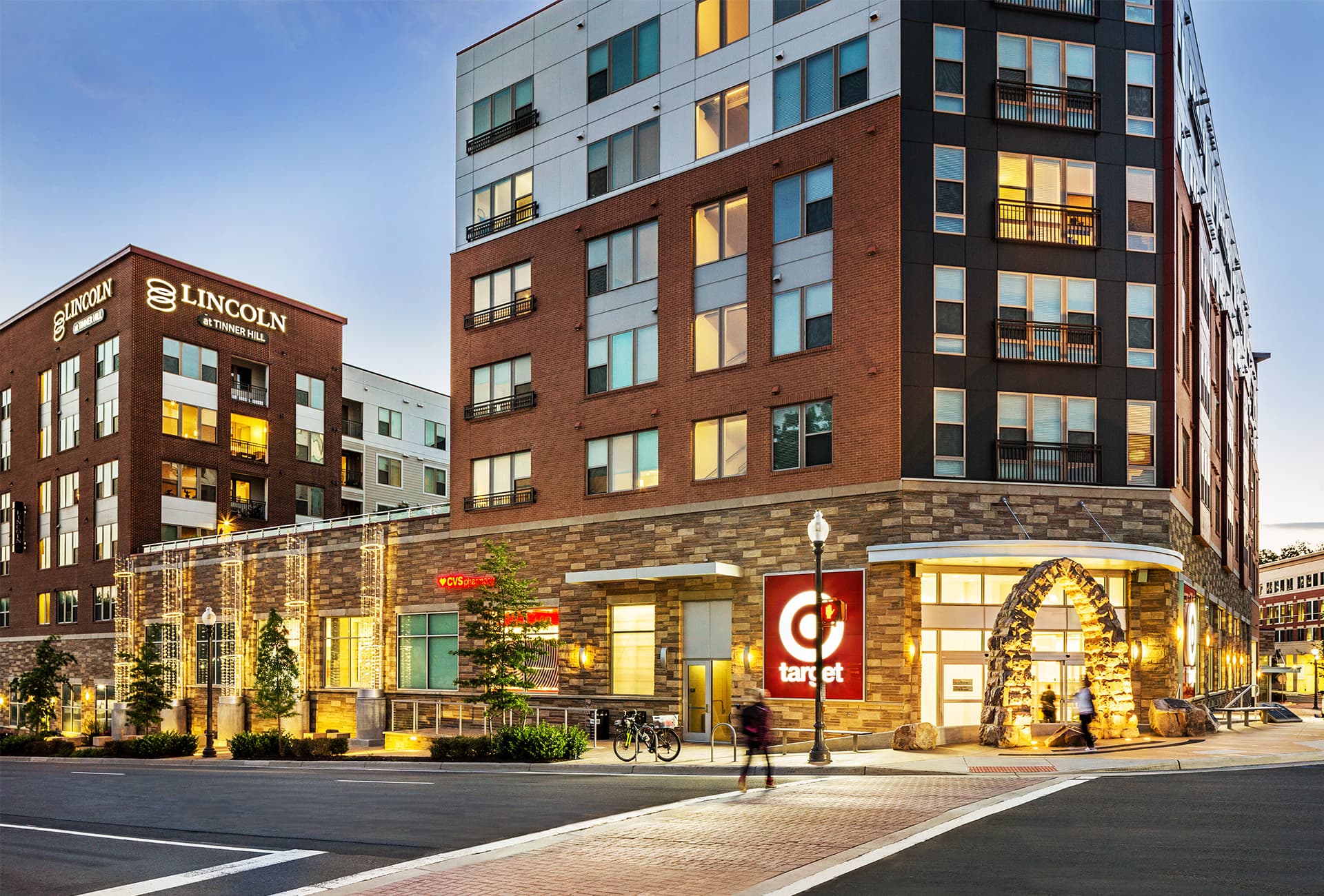
Meaningful Mixed Use
Not only commemorating the region's historical significance and elevating its cultural identity, plans for a mixed use community exceeded expectations.
Lincoln at Tinner Hill sits on a triangular block originally zoned for commercial business, but is now a mixed use neighborhood asset that not only provides multi-family housing and access to daily necessities, but stitches together cultural landmarks that define the community.
A gateway park and storytelling walking trail that border the site educate and reflect on the civil rights history of the prominent African Americans who lived and worked in Falls Church, Virginia since the 19th century. Through engravings, monuments, plaques, signage, and artwork, the trail honors the living legacy of these individuals and directs residents and visitors to the rich heritage and cultural resources throughout the city.
LandDesign’s multi-disciplinary approach integrated the historical overlay with existing streetscapes, public amenities, and architecture surrounding the project site. Community outreach and a careful selection of materials and public art add to the streetscape vibrancy and gives identity to the project that both sets it apart and stitches it into the fabric of the city.
LEED Silver Certified
The development team integrated sustainable features that clean and remove contaminated asphalt and soil, used permeable pavers for the walkway that falls within the floodplain, and planted trees along the streetscape to provide a shade canopy.
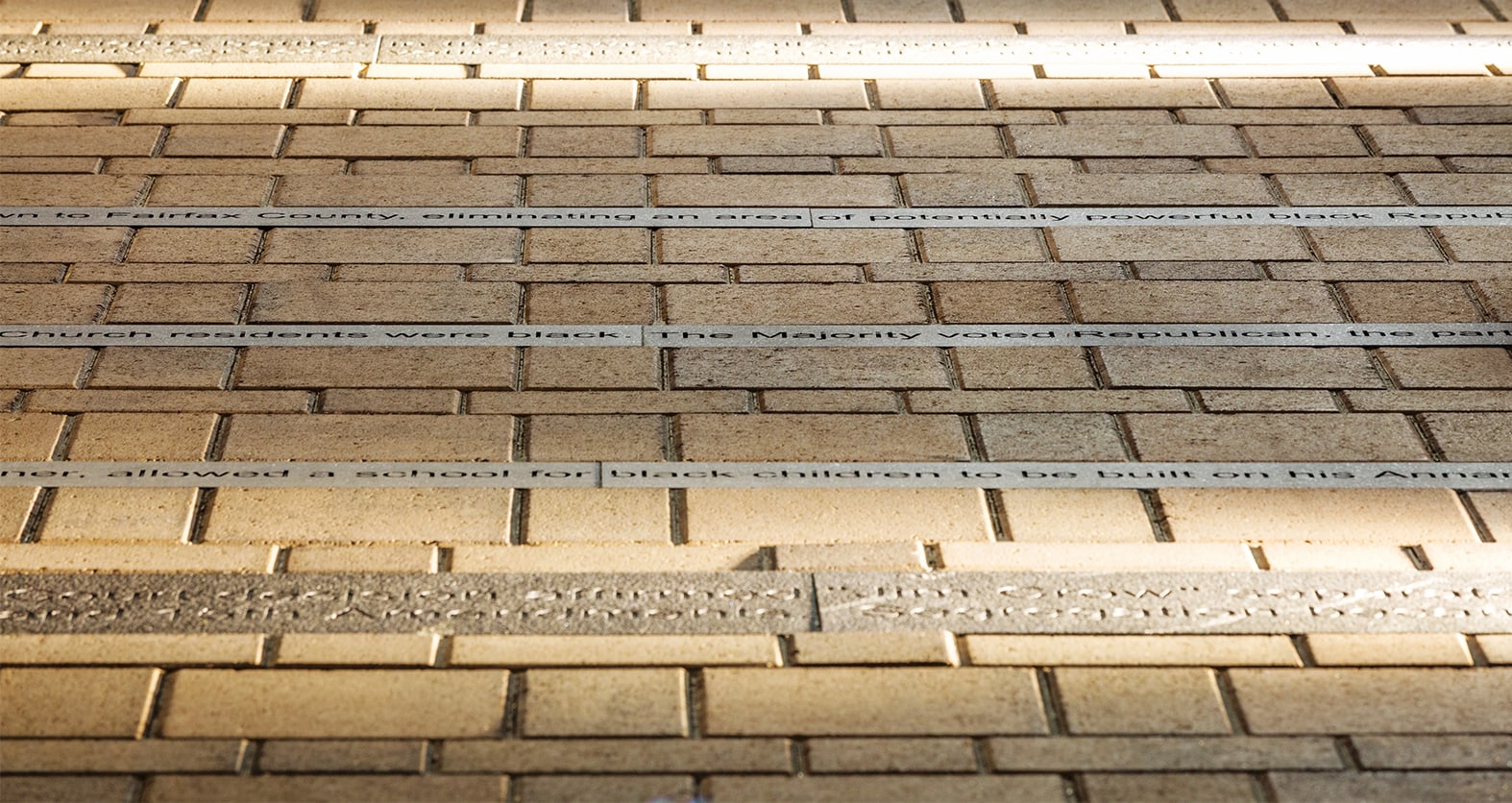
Inspired by the remarkable past of the city, the Cultural Trail at Lincoln at Tinner Hill commemorates the stories of individuals who contributed to the cultural and civic identity of Falls Church, including landowner and first president of the Falls Church NAACP chapter Joseph Tinner. Although not a historic site, the streetscape design acknowledges the significance of historical figures of Falls Church with a primary focus on African American educators, physicians, farmers, ministers, soldiers, artists, and stonemasons who were instrumental to the larger story in the struggle for civil rights that continues today. Retelling these hidden stories along highly public streetscapes provides a visible record of the contributions made by such figures who were influential neighbors and community members.
Historical Timeline
The pedestrian walkway features an engraved timeline outlining moments in the City’s civil rights story and extends the experience of the existing historical walking tour. The dark-gray granite represents major national milestones in the timeline, while the light gray bands highlight individual milestones occurring at a local level.
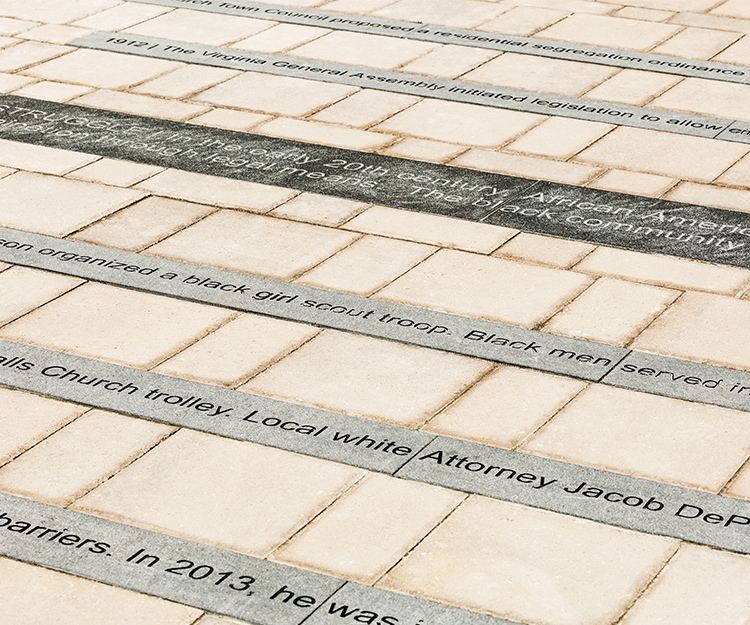

A corner of the site was already host to a destination on the cultural walking tour — a monumental arch surrounded by boulders and plaques honoring the individuals of Tinner Hill who formed the first rural branch of the NAACP. Local historic preservationists requested that the area surrounding the monument be designed as a space of recognition, and to avoid using the arch as an extension of the retail entrance. The location was an immense constraint on the building’s footprint and challenged our designers to position the retail entrance in a way that respected the arch and followed ADA compliance.
Additional site challenges included a multi-jurisdictional flood plain that extends across the gateway park, requiring coordination and approval by both Fairfax County and the City of Falls Church. Design and construction tolerances were factored into the design following approval of a conditional map revision by FEMA. The finished elevation and components of the park accommodate the floodway, and while this put constraints on the design process, the park’s experience is not limited.
Arch Plaza
The community wanted the arch’s location preserved but insisted it not serve as a direct retail entrance — passing through it was intended as a symbolic, transformative experience. A strategic layout and grading plan with ADA access kept the two experiences separate, yet adjacent.
This location is significant in that the top of Tinner Hill was where these citizens resided. It is across the street from the pink granite quarry originally mined by Joseph Tinner, where the stones that compose the arch originated. The rare pink granite serves as inspiration for the color and materials palette for the exterior of the entire project.
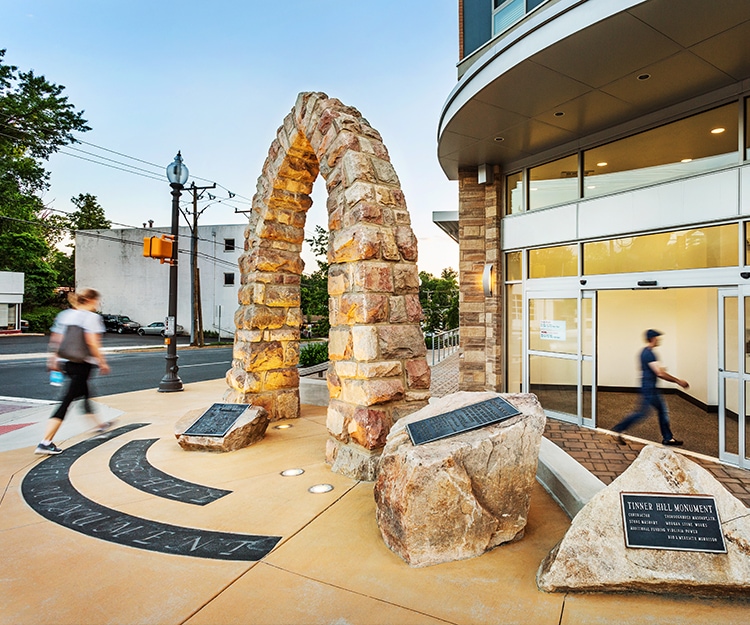
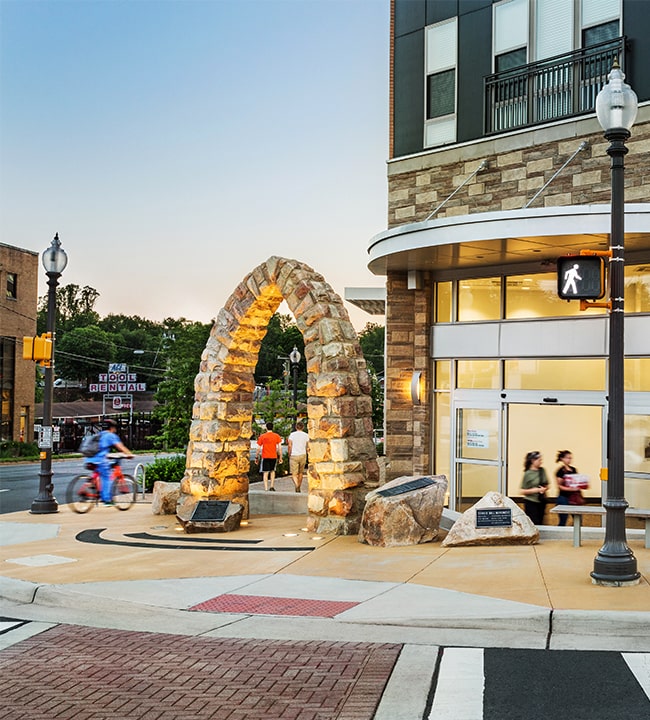
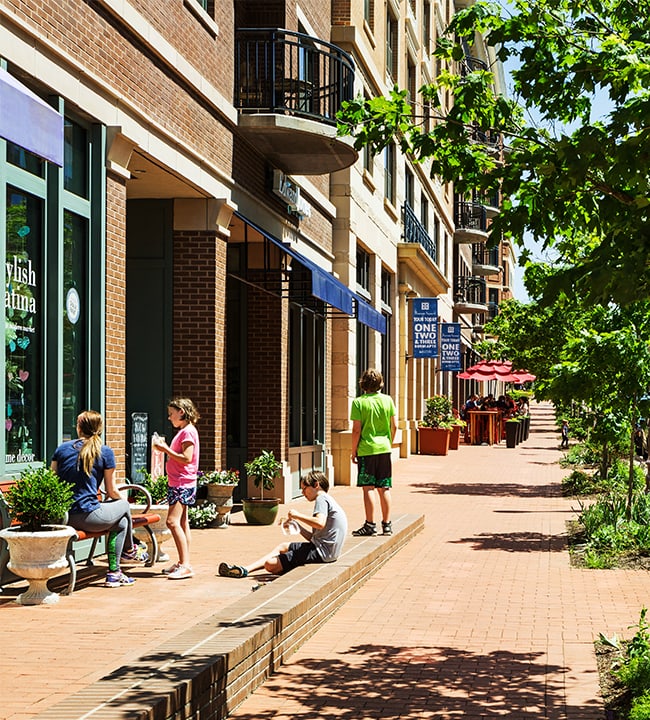
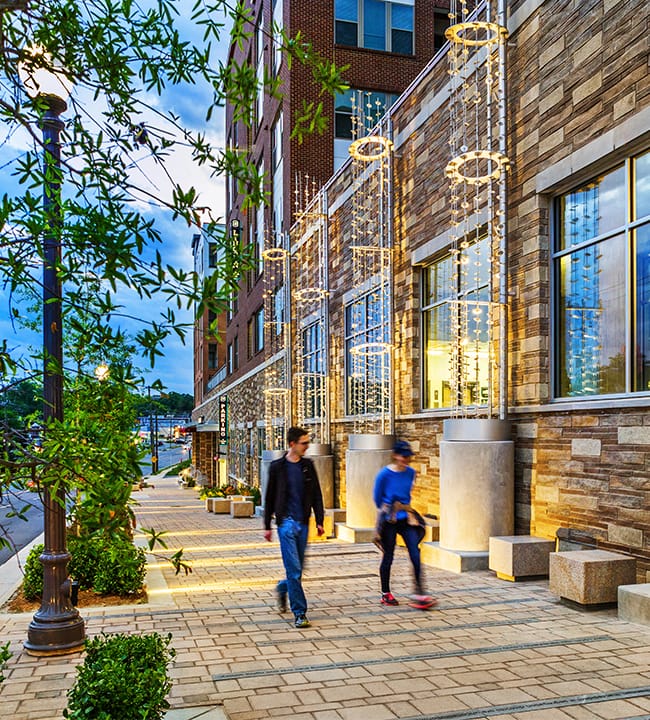
Physical
Preserve the existing location of The Tinner Hill Monument arch that represents key pieces of the city's history
Functional
Maximize the usage and density of valuable land as a gateway to the City of Falls Church, in accordance with the comprehensive plan and design guidelines established by the City
Social
Build upon the efforts of Falls Church to foster an Arts and Cultural District in support of the history of the city and memorialize the strong Civil Rights roots that identify the community it is today

Physical
Preserve the existing location of The Tinner Hill Monument arch that represents key pieces of the city's history

Functional
Maximize the usage and density of valuable land as a gateway to the City of Falls Church, in accordance with the comprehensive plan and design guidelines established by the City

Social
Build upon the efforts of Falls Church to foster an Arts and Cultural District in support of the history of the city and memorialize the strong Civil Rights roots that identify the community it is today
Public Art as a Community Draw
Five artistic, dramatically-lit pillars stand tall with wind-reactive fluttering disks that catch light and draw the pedestrian’s eyes up from the paved timeline to the monument arch at the top of Tinner Hill. These pillars represent the Humanities Council of Falls Church: City of Arts, Theatre, Culture and History (C.A.T.C.H.).
